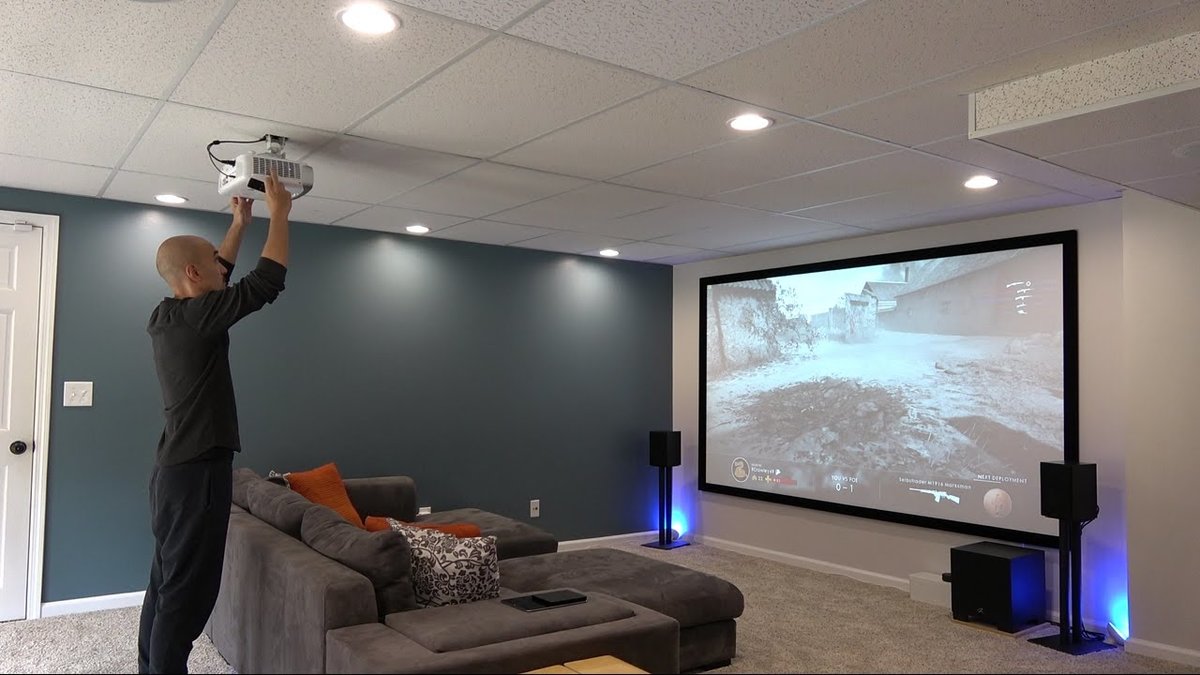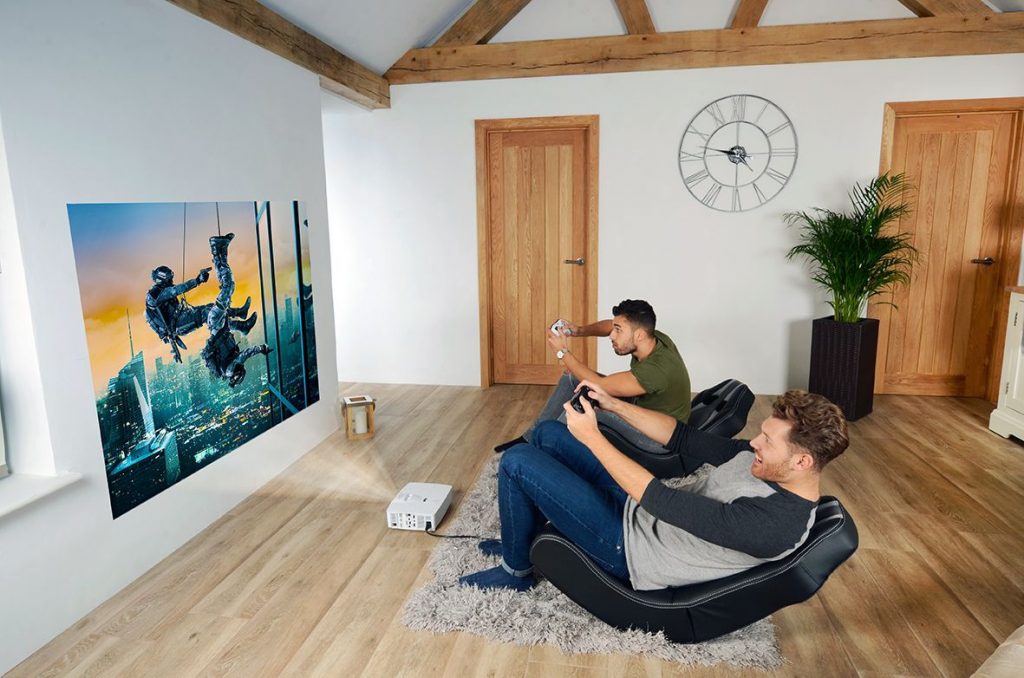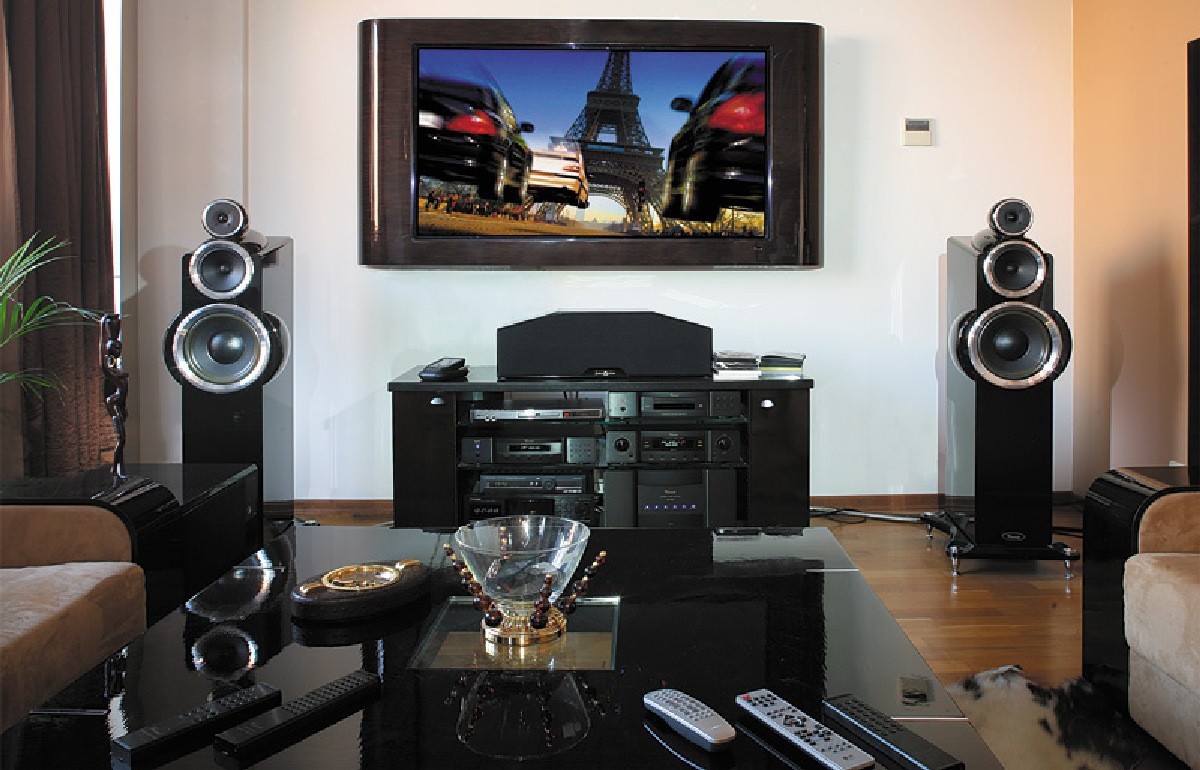How does a home theater projector work?
 Taking into account the capabilities of modern technologies, organizing a virtually full-fledged cinema at home has become a reality that many can afford. We are not even talking about wide-format plasma screens, the price of which in some cases is comparable to the price of a budget car, but about projectors that project a video stream directly onto a white wall or a special surface.
Taking into account the capabilities of modern technologies, organizing a virtually full-fledged cinema at home has become a reality that many can afford. We are not even talking about wide-format plasma screens, the price of which in some cases is comparable to the price of a budget car, but about projectors that project a video stream directly onto a white wall or a special surface.
The content of the article
What is a home theater projector and what are its characteristics?
A multimedia projector is a device designed to project information in a wide format that comes from an external source. This can be a computer or laptop, or a VCR or DVD player. In some projector models, the developer provides connectors for flash drives and USB cables, which somewhat expands the functionality of the device, allowing you to play video without using a computer.
ATTENTION! Most models have all types of inputs, but before purchasing it would be a good idea to check with your sales consultant about the availability of the appropriate connectors in the device, since projectors often come onto the market with either only computer or only video inputs.
The main characteristics that you should rely on when choosing a projector include:
- Permission.
- Light flow.
- Contrast.
- Uniformity of lighting.
- Presence or absence of a buzzer.
- Number and types of connectors for connection.

ATTENTION! If the user intends to purchase a projector for use in presentations on-site, then one should pay attention to such characteristics as the weight of the device and the resistance of the housing to external damage.
Experts recommend giving preference to models with a luminous flux ranging from 1000 to 2000 lm. Devices with this flux value will be able to work perfectly even in brightly lit rooms, which will eliminate the need to darken the room or hall in which playback is planned.
As for the contrast, its values should be between 1000:1 and 2000:1, otherwise viewers simply risk not being able to see all the dimly lit scenes of the film. In addition to contrast, you should also pay attention to the noise produced by the device during operation. A slight noise during operation of the device’s cooling system is inevitable, but it should not block the soundtrack of the movie being played.
How a projector works, its pros and cons
The principle of operation of most projectors is simple: the image coming from an external source is transferred to a specially prepared surface using a geometric projection (in the case of a home theater, a flat white wall will do). Most people born in the USSR remember the first Soviet home projectors, with which they viewed filmstrips by manually scrolling the film frame by frame.
Modern devices have much wider playback capabilities and, due to their ease of operation, are gaining more and more popularity among fans of watching movies on the big screen.
Like any other technology, projectors have a number of advantages and disadvantages. The first include:
- the relative cheapness of the device as an element of a home theater system;
- simple installation;
- small dimensions;
- ability to adjust screen size;
- safety for vision;
- Possibility of use for video games.

Among the disadvantages of such devices, it is customary to highlight:
- the need to darken the room if the luminous flux of the device is low;
- difficulty adjusting focus for pendant models;
- need for setup before use;
- inability to use TV for broadcasting;
- the need to install a speaker system to achieve good sound quality.
ATTENTION! Contrary to popular belief, a large room is not required to play a video stream, and the distance between the device and the wall can be only a couple of meters. Therefore, such equipment can be used in small apartments.
Types of projectors for home
Classification of projectors according to the type of technology used to transmit the image:
- LED/LCD models. The operation of such devices is based on LCD matrices, which allows access to truly high-quality images and high resolution. Such models are quite expensive, but the picture quality fully justifies the price.
- DPL models. The operating principle of these devices is based on the use of a mirror matrix. Great for 3D image modeling.The obvious disadvantages include the appearance of rainbow stains in dynamic movie scenes when the image changes too quickly.
- Projectors using LCOS technology. Projectors of this type are not very common on the market and, in fact, combine the projection principles of the first two types of devices.
If we are talking about choosing a device for home use, then it is preferable to choose models with a screen aspect ratio of 16:10 and 16:9. This is explained by the fact that most modern films are released on world screens in this format.





